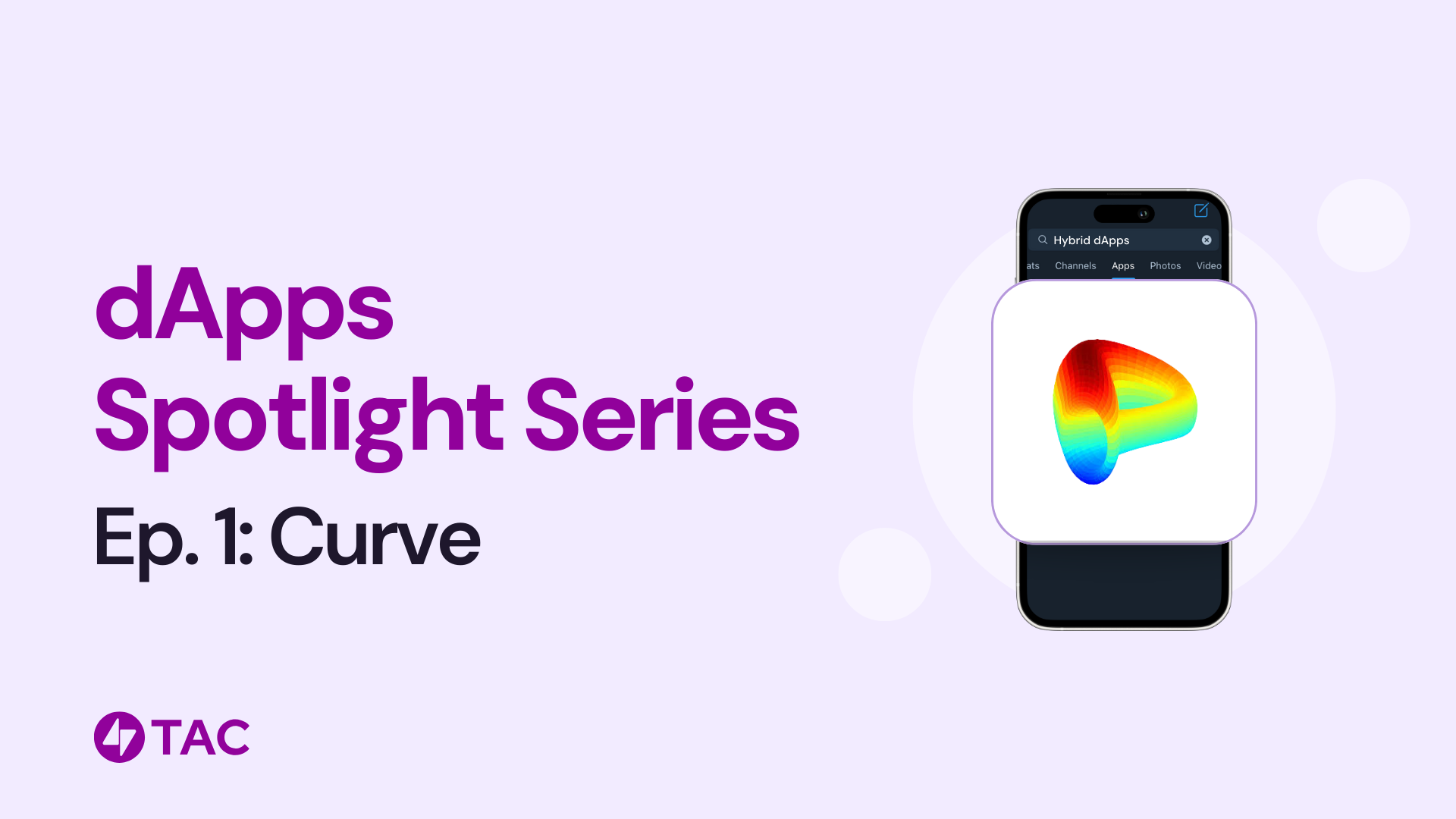Three months after its Mainnet went live, TAC has moved from launch excitement into a phase of measurable, compounding growth. The data from the past three months show that Telegram users are ready for embedded finance; or finance that are accessible within their everyday digital conversations.
From mid-June to early October, data across users, transactions, contracts, and liquidity paints a clear picture. TAC has entered its post-hype consolidation phase, and instead of cooling down, it is showing the early signs of a durable, engaged economy built on top of Telegram MiniApps such as Curve, Morpho, and Euler.
The network now stands at the intersection of adoption momentum, transaction velocity, and ecosystem maturity, proving that TAC is more than a launch campaign; it is becoming a high-frequency settlement layer for consumer-facing DeFi on Telegram.
This report breaks down that evolution across five foundational pillars: user growth, transaction behavior, active network components, developer confidence, and liquidity durability.
User Growth Signals Real Adoption
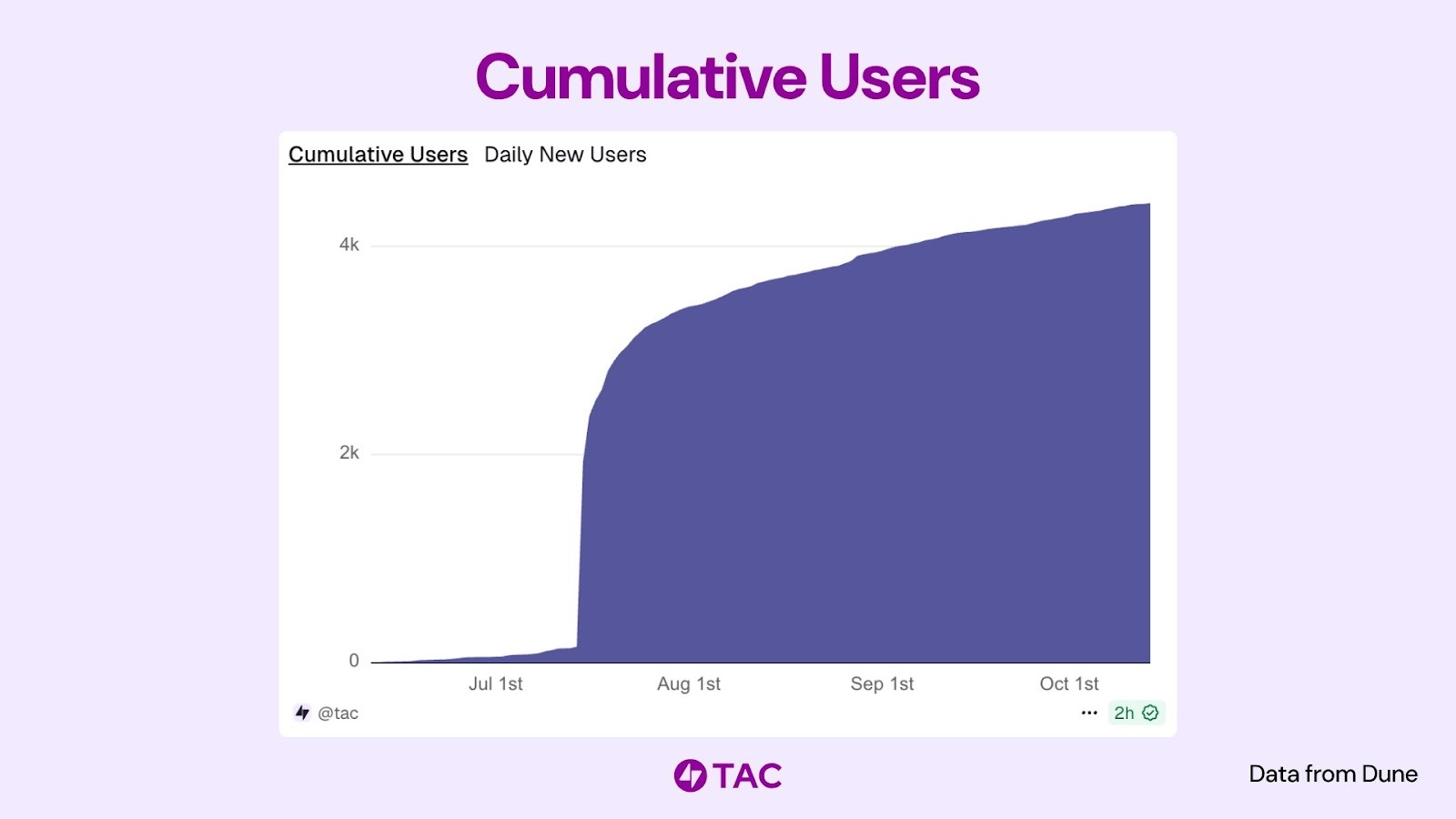
The spike on July 17th, with more than 1.5k Daily New Users in a single day, represented the network’s first viral moment. While this initial wave was expected, the critical test was what happened next. User onboarding followed a textbook adoption curve, a launch-triggered surge, followed by stabilization into a healthy baseline of consistent arrivals.
By early October, TAC has crossed 4,500 cumulative active wallets. TAC is not just onboarding tourists; it is cultivating a base of recurring users driven by real utility. That utility is reinforced by the transaction depth data (as of October 15, 2025):
- More than 1,000 addresses have executed 3–5 transactions, proving they did more than a one-off test.
- 896 addresses executed only 1 transaction, representing the exploratory layer.
- 352 addresses fall in the 10–20 transaction range.
- 288 addresses have passed 50+ transactions, forming the first layer of power users, the economic backbone of the chain.
Retention + transaction depth = early proof of product-market fit. TAC is cultivating not just presence, but routine behavior.
Transaction Velocity: A High-Frequency Network Emerges
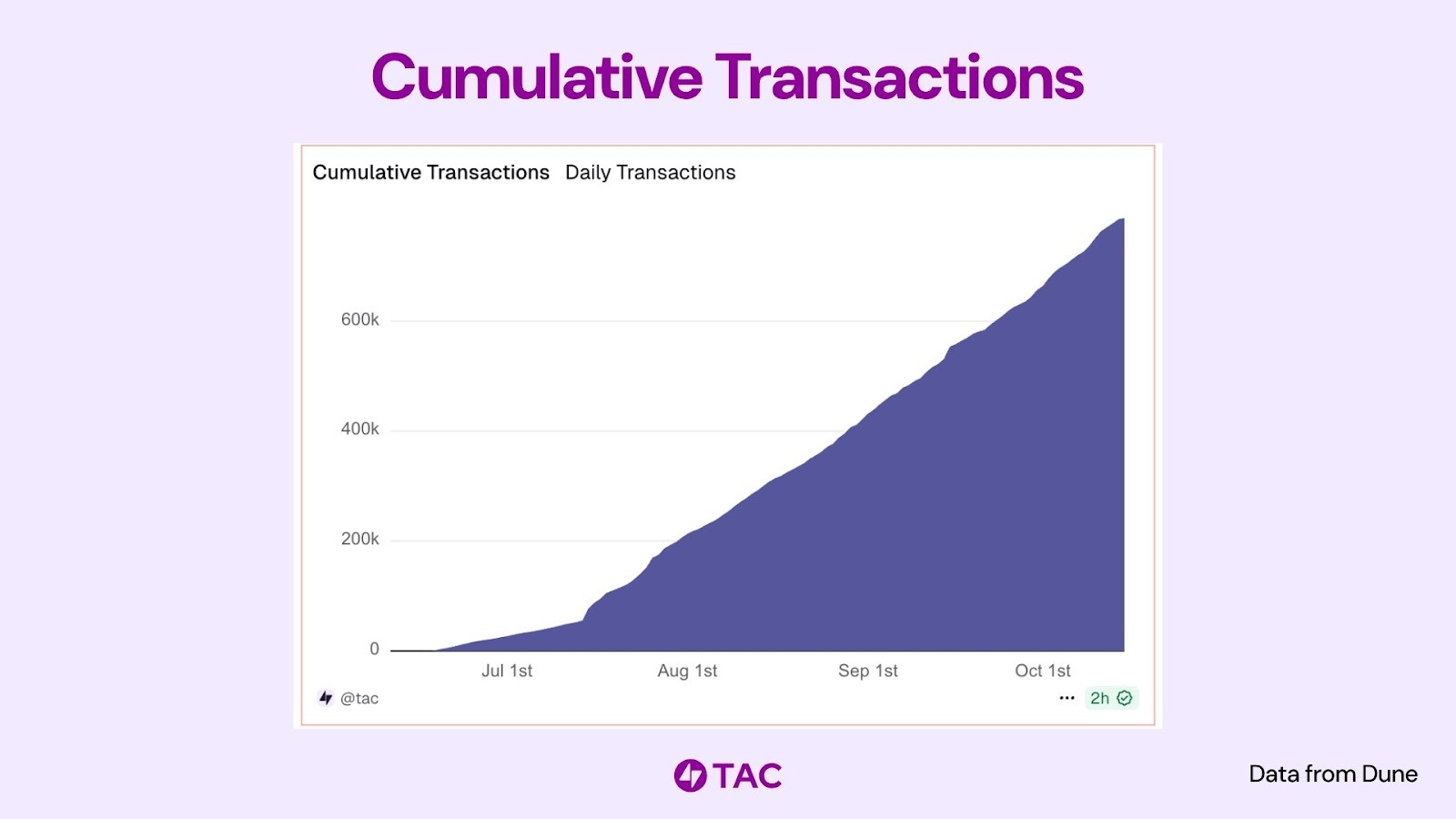
The network is approaching 700,000 cumulative transactions, a number that speaks not only to activity but repetition. The July 17th spike brought 20,000+ daily transactions at peak, mirroring the user influx. But what matters more is the post-spike stabilization.
If users represent demand, transaction velocity represents active economic supply and TAC is showing signs of a high-velocity environment typical of consumer applications rather than passive financial protocols.
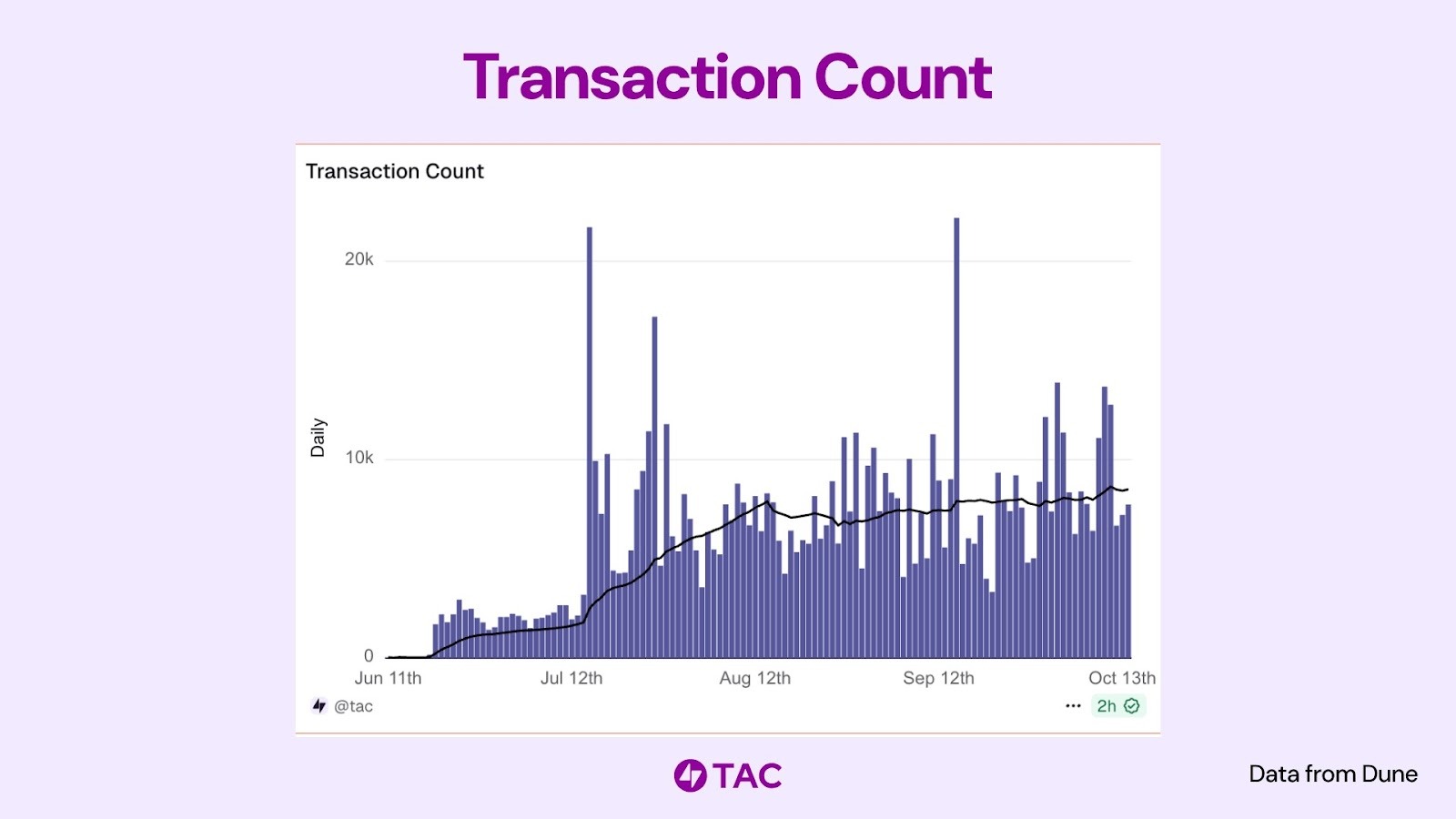
In September and early October, daily transaction counts consistently land in the 8,000–10,000 range, supported not by hype but by a core group of ~200–300 daily active addresses.
TAC’s numbers are driven by MiniApps that encourage multiple lightweight financial actions in a single session, rather than the classic “one transaction, done” DeFi user pattern.
This signals something deeper.
Active Addresses and Contracts: Human Activity and Developer Confidence Align
From June’s near-zero baseline, the curve of Active Contracts has climbed steadily to over 20 contracts interacting daily by September–October. This is not just a count of deployments, it reflects contracts being actively used. In short, builders are not just testing TAC, they are launching and scaling on it.
Sustained adoption is not only about users returning, it is also about developers choosing to stay and deploy more infrastructure. This is where the Active Contracts data becomes a crucial signal.
Parallel to this, Active Addresses (excluding smart contracts) spiked during the July wave, crossing 1.5k active users in a single day, before stabilizing into a 200–300 daily active user baseline. These users represent the committed core who interact consistently, pushing daily transactions forward and giving deployed contracts real economic throughput.
A rising contract curve with a stable active user base indicates balance. TAC is not becoming contract-heavy without users, nor user-heavy without infrastructure. Both sides are moving together, a sign of ecosystem maturation rather than speculative overshoot.
Liquidity and TVL: From Hype Capital to Sticky Capital
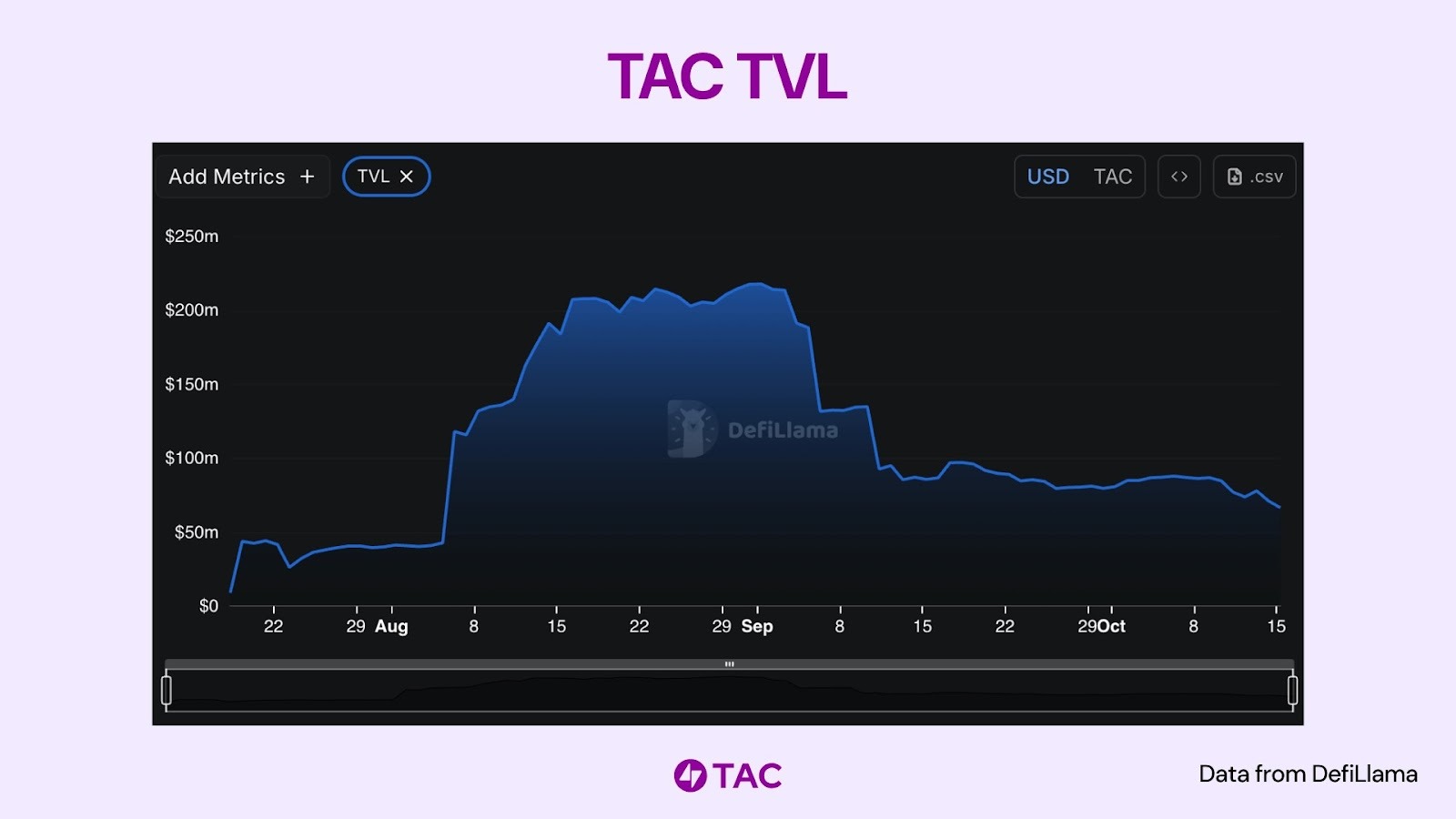
Total Value Locked reached a peak of over $200 million in late August and early September, a reflection of successful incentives and liquidity campaigns such as Summoning. While many networks collapse after campaign-driven TVL events, TAC instead transitioned into a stabilization phase.
As of early October, current TVL sits at $76,715,046. Daily change is −8.90%, weekly change −11.68%
Three months in, TAC’s metrics illustrate a self-reinforcing ecosystem:
- Frictionless onboarding via MiniApps → ≈ 4.5k cumulative users.
- High retention (~39% after 3 weeks) → converts newcomers into core daily active addresses.
- High-frequency transactions (~8–10k/day) → sustains contract usage and liquidity demand.
The result is a TAC flywheel, where onboarding, engagement, developer adoption, and liquidity all reinforce each other, inside Telegram. This is the network effect, accelerated by embedded finance in an already active communication platform.
These are not numbers of a speculative launch; these are the early formation signs of a self-sustaining economic flywheel.
Onboarding feeds retention, which feeds transaction velocity, which attracts developers, which in turn attracts capital, which enhances user incentives, which loops back to onboarding.
The difference with TAC is that this loop runs not in DeFi dashboards but within chat flows, inside Telegram, a place where attention is already native, and interaction habits are already established.
Looking Forward: TAC’s Unique Position in the Telegram Economy
Three months in, TAC has proven two things simultaneously:
- Telegram users are ready for embedded finance, not as a separate DeFi category, but as a native part of their messaging behavior.
- EVM developers are willing to follow those users, if they are given a direct path to deploy without rewriting their stack.
The result is a narrowing gap between attention and liquidity, exactly the transformation TAC set out to create.
With a retained user core, rising contract activity, high-frequency transactions, and tens of millions in, the groundwork is laid. The next phase for TAC will not be defined by another spike, but by the acceleration of this compounding base, transforming more EVM dApps into Telegram MiniApps.
For builders watching the early data, the network is no longer experimental. It's operational and accelerating.
.png)








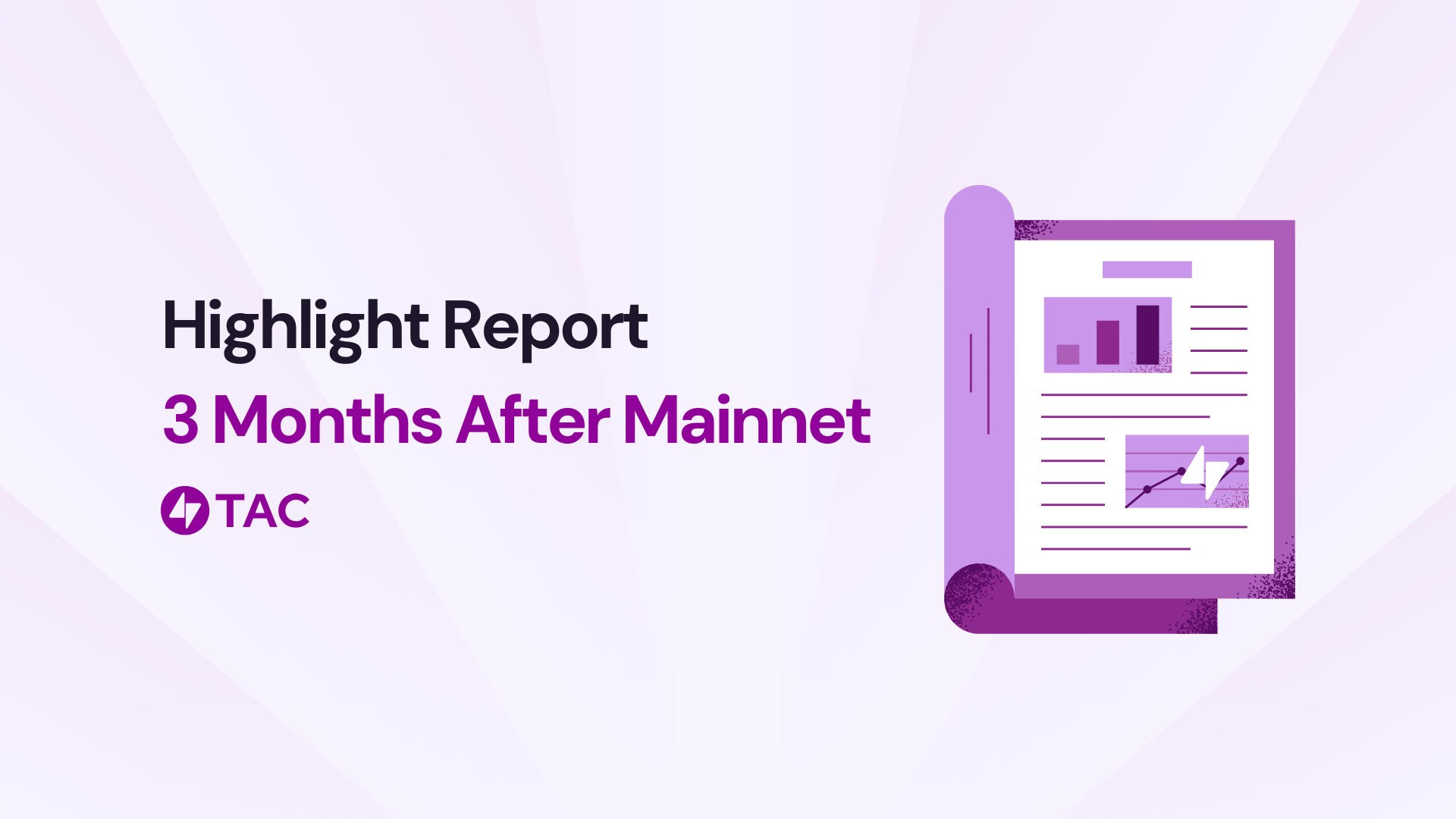
.jpg)

